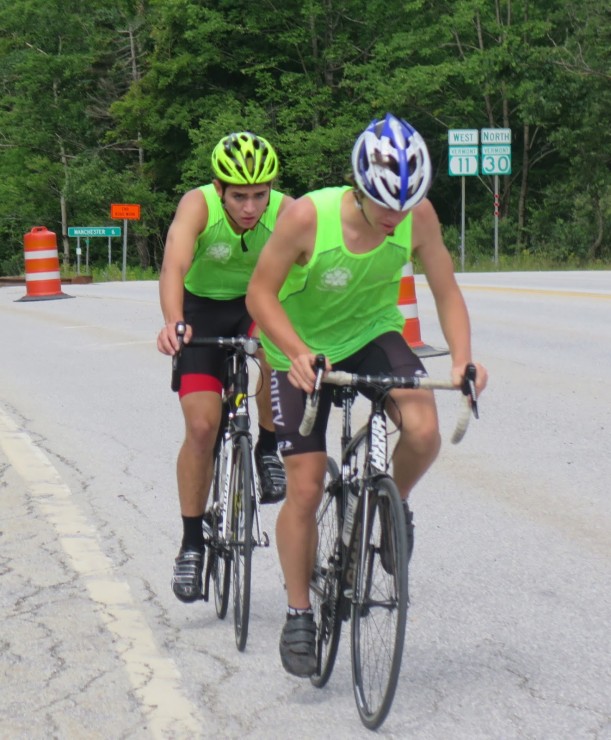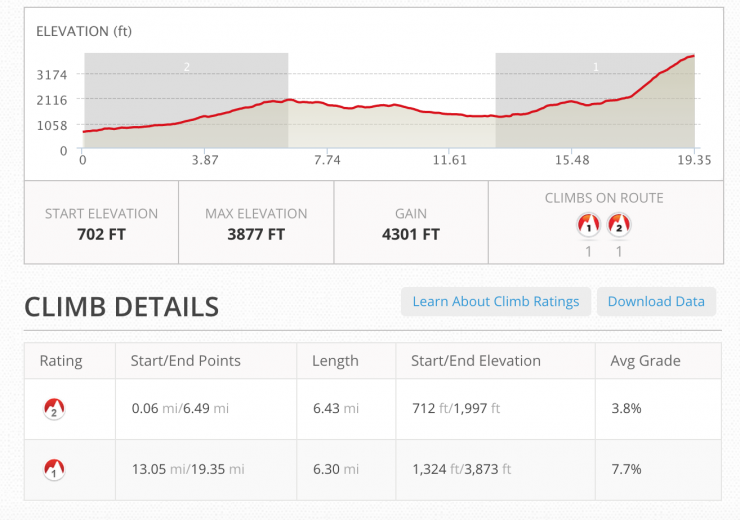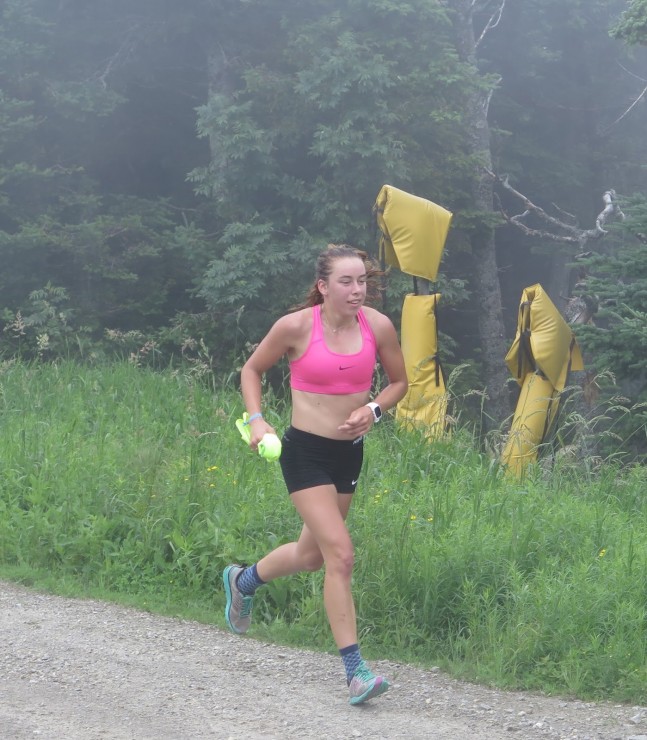
When the Stratton Mountain School (SMS) team began its July mini camp this year, its athletes knew the focus was going to be a little different than years past. Rather than focusing on maintaining a low intensity during a high-volume camp, the SMS high-school athletes pushed themselves by going at a relatively high intensity while maintaining a high volume. This year’s Vertical Challenge, which is the pinnacle workout of the mini camp, exemplifies the new approach.

“I think the first time we did it we just said, you know we’ve been doing some combi ODs [over-distance workouts], and we said, let’s do one that’s kind of … gnarly because there is a lot of vertical gain,” SMS Nordic Program Director Sverre Caldwell explained in a phone interview. “We said, we want you to go hard.”
This did not turn the workout — held July 15 — into a full-on race, but it did shift the focus. Athletes started at one-minute intervals and maintained a threshold effort for around two hours. In this case, threshold would be a pace in which one can push themselves but also stay in control enough to keep that pace for a long time.
Adding to the difficulty was that the course had a net gain of 3,185 feet, so there was little rest. The workout began in Manchester, Vt., where SMS skiers started climbing on road bikes. After 12.5 miles, they reached Bondville, Vt., where they switched from bikes to rollerskis to ascend the Stratton Mountain access road. After another five miles, contestants made the final change into running shoes before climbing about two miles to the summit of Stratton Mountain. Needless to say, it was a lot of climbing and a lot of threshold.
“The reason we did it was … just to do something that’s hard,” Caldwell said. “That’s much more than you would do in a race or in normal training, to put everything in perspective. Like now, when you have to go out and have go hard for 5 k, it’s pretty easy.”
The goal of the camp and the Vertical Challenge specifically was to push the limits and test the resolve of its athletes. It was also meant to make them feel tough, which that can be difficult to accomplish during low intensity ODs.
As for the SMS athletes, Caldwell said they definitely thought it was tough. They all knew the Vertical Challenge was going to be difficult going in, but they understood what the goals were and were well prepared for the challenge.
“[The increased intensity] made it harder, but not necessarily better or worse. It was just different,” he said. “I think they had a good feeling of accomplishment because you know, when you finish something that’s tougher then you tend to feel a little better about it as long as you pushed hard through it.”
After finishing the workout, the SMS nordic team celebrated with a cookout.

The Workout
Step 1: Organize
– Find a low point and a high point about 20 miles apart. These will be the start and end points of the workout.
– Decide on transition points from biking to rollerskiing (leaving the bike and putting rollerskis on), and from rollerskiing to running (where you’ll leave your ski boots and lace up your sneakers). Ideally the running and hiking section would be on the steepest terrain, the rollerskiing would be on the next steepest terrain, and the biking would be on the most gradual terrain, though this could vary depending on your area. Someone with a car to carry equipment and extra water and snacks is also very useful for meeting at these transitions.
Step 2: Ascend
– Begin by doing a warmup as if the workout was a 25 k or 50 k ski race.
– Next, start the ascent on the bike at around threshold. Try and maintain this effort throughout the rollerski and the run/hike as well. Because speed isn’t of the utmost importance in this workout, don’t worry if the transitions are a little slow.
– Once you have summited, celebrate by doing a low-intensity warm down before continuing the celebration with some food or even a cookout.




